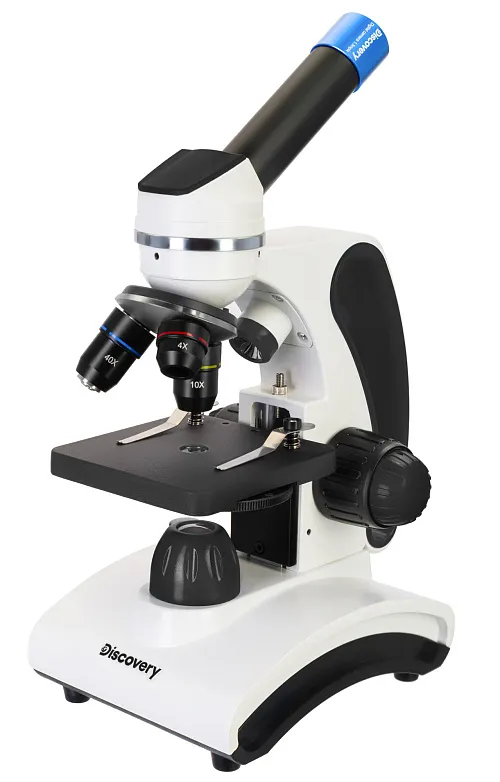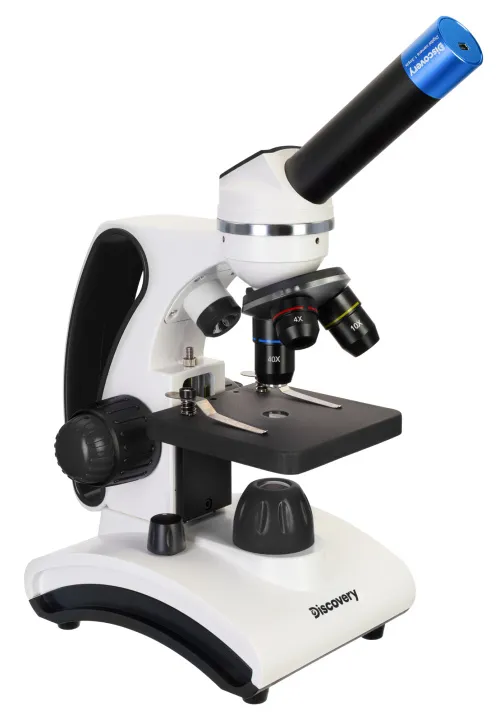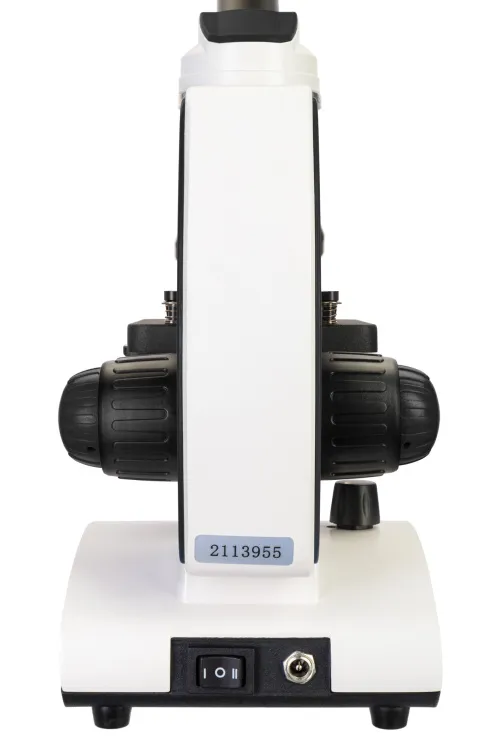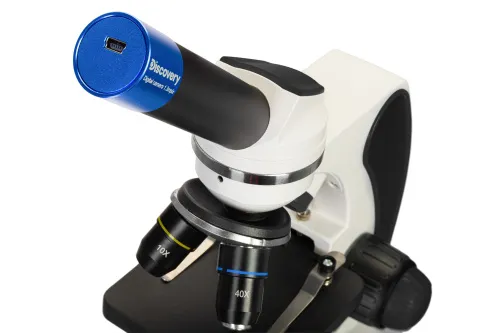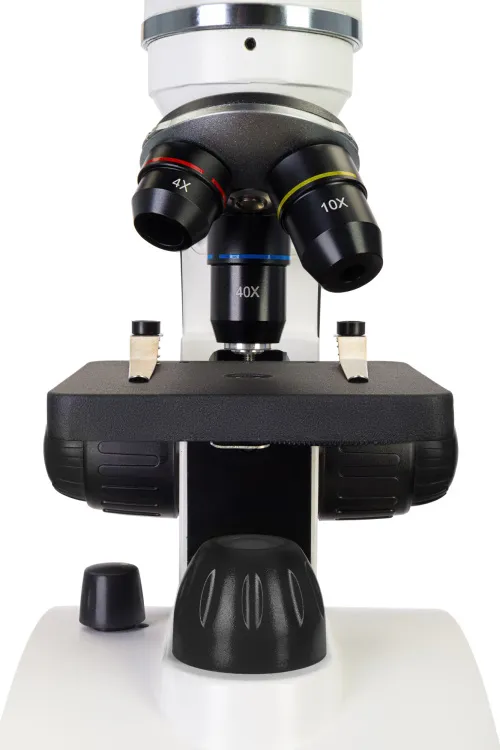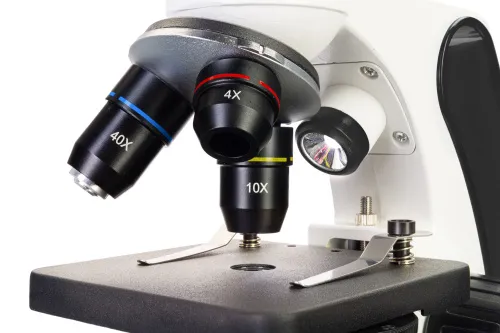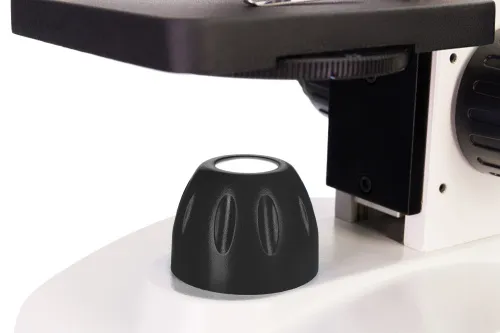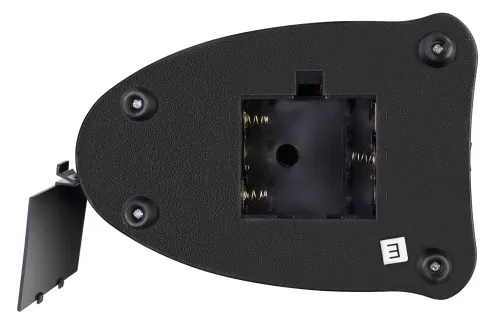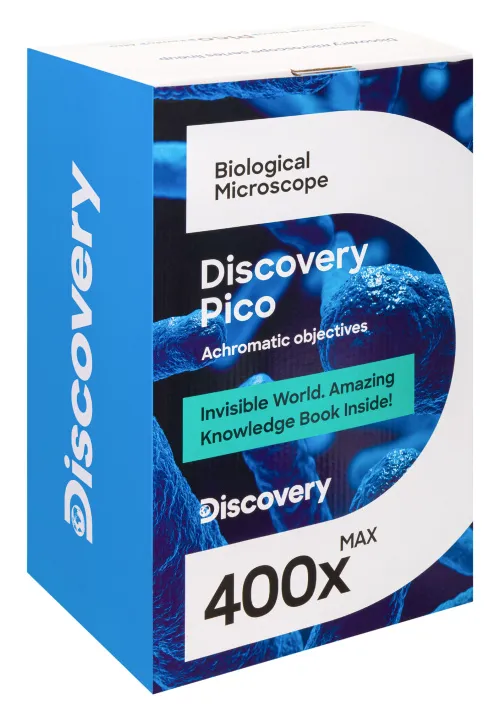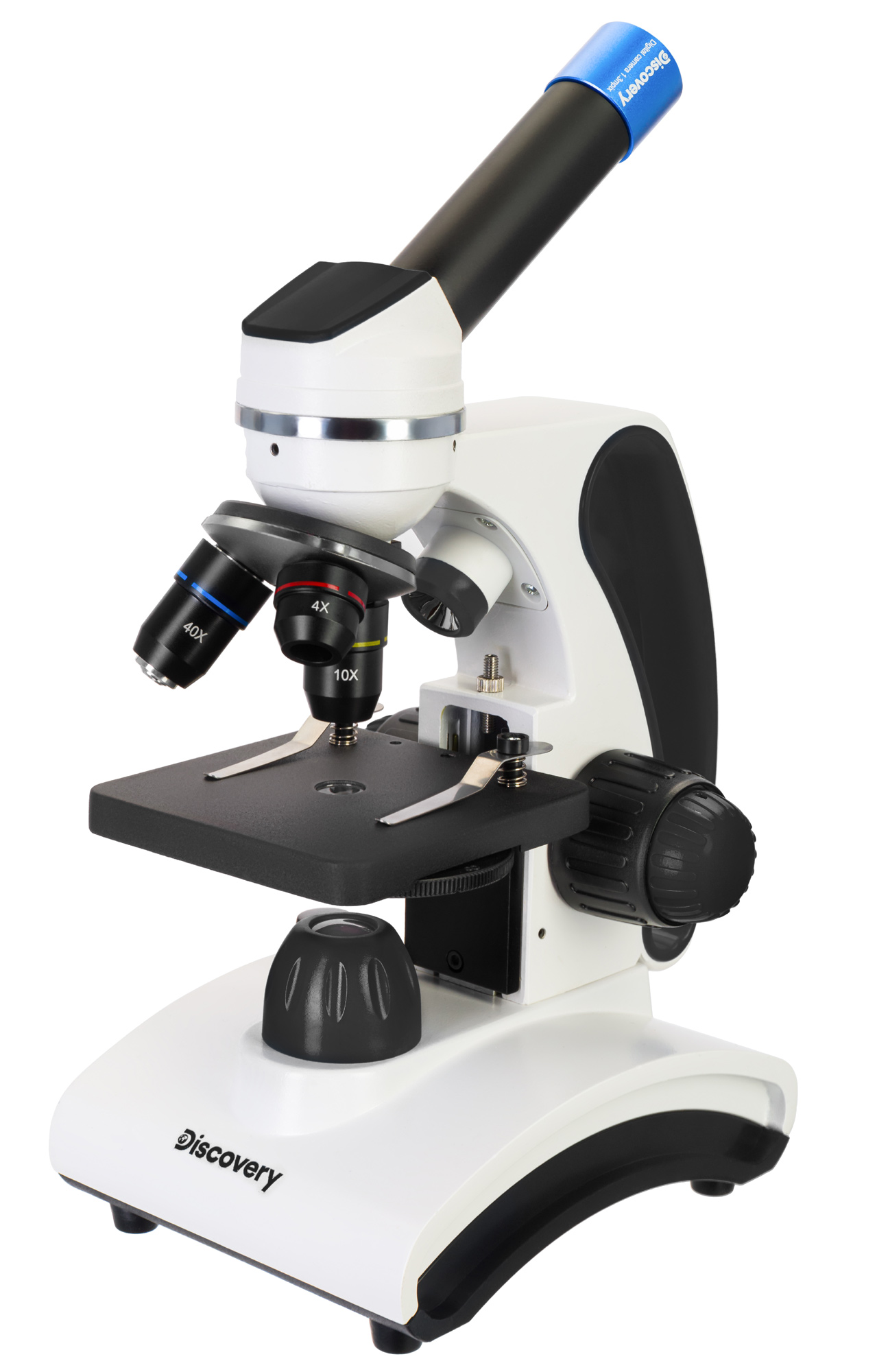Levenhuk Discovery Pico Polar Digital Microscope with book
Achromatic. Rotatable head. LED illumination. Fine focusing. Magnification: 40–400x. 1.3MP Digital camera in the kit
| Product ID | 79140 |
| Brand | Discovery |
| Warranty | 10 years |
| EAN | 5905555014111 |
| Package size (LxWxH) | 35x22x17 cm |
| Shipping Weight | 2.28 kg |

Discovery Channel informs, entertains and inspires its audiences around the globe about the world in all its wonder, diversity and amazement. Offering millions of people the chance to discover, and satisfy their curiosity, Discovery offers a compelling mix of stories across genres including science and technology, exploration, adventure, history and in depth behind-the-scenes glimpses at the people, places and organisations that shape and share the world we live in.
We proudly present the Discovery optics series that is produced by Levenhuk and endorsed by Discovery.
Check out a brief comparison of the Discovery microscope series »
The Levenhuk Discovery Pico Polar digital microscope is a biological microscope with a 1.3MP digital camera. It can be used not only for visual observations of the microbial world, but also for capturing research in photo and video formats. This microscope will come in handy in your studies, it will be a good choice for your hobby. It is user-friendly; even a beginner can easily use it. The microscope comes with a knowledge book about the microbial world.
Achromatic Optics and Fine Focusing
The monocular head can be rotated 360° horizontally. It can also be tilted 30°. This is useful for long-term and group observations, as it makes working with the microscope more convenient. The optics, including achromatic objectives and a wide-field eyepiece, are made of glass. The 40x objective is equipped with a protective spring-loaded frame that protects the front lens from damage. The microscope magnification range is from 40x to 400x. Coarse focusing can be adjusted with the side coarse focus knobs.
Adjusting LED illumination system
The microscope features a LED Illumination system with brightness adjustment. It is powered by batteries (not included) or AC power supply (included). The stage features sample holding clips. The diaphragm disk is placed under the stage.
1.3MP digital camera for photo and video recording is included
The 1.3MP digital camera enables you to display the image under the objective on an external screen, take pictures, and record video. Everything that is placed on the stage comes into its field of view. The camera is installed directly into the eyepiece tube (you must first remove the standard eyepiece) and it is connected via a USB cable to the computer. You also need to install the software that is included in the kit. The frame resolution is 1280x1024 pixels. Video recording is possible at 30 frames per second, which allows you to shoot very smooth videos. You can carry out simple editing of photos (adjust brightness, change the size of the picture, etc.).
"Invisible World" Knowledge Book is included
The "Invisible World" knowledge book is a nice addition to the microscope, as this educational guide is colorfully illustrated and well written. It contains the history of microscopy, a description of scientific experiments that you can conduct on your own, a list of the most interesting inhabitants of the microbial world, and much more.
Features:
- Monocular head can be rotated 360°
- Achromatic, 40–400x magnification, 1.3MP digital camera
- Adjusting dual LED illumination system
- Powered by standard batteries or AC
- Stage with clips; coarse and fine focusing
- Comes with a colorful knowledge book
The kit includes:
- Microscope
- WF10x eyepiece
- Achromatic objectives: 4x, 10x, 40xs
- Digital camera: 1.3MP
- USB 2.0
- Software CD
- AC adapter with a power cable
- Dust cover
- "Invisible World" knowledge book
- User manual and warranty card
| Product ID | 79140 |
| Brand | Discovery |
| Warranty | 10 years |
| EAN | 5905555014111 |
| Package size (LxWxH) | 35x22x17 cm |
| Shipping Weight | 2.28 kg |
| Type | biological, light/optical, digital |
| Microscope head type | monocular |
| Optics material | optical glass |
| Head | 360 ° rotatable |
| Head inclination angle | 30 ° |
| Magnification, x | 40 — 400 |
| Eyepiece tube diameter, mm | 23.2 |
| Eyepieces | WF10x |
| Objectives | achromatic: 4x, 10x, 40xs (spring) |
| Revolving nosepiece | for 3 objectives |
| Stage, mm | 90x90 |
| Stage moving range, mm | 0–10, vertical |
| Stage features | with clips |
| Condenser | N.A. 0.65 |
| Diaphragm | diaphragm disc (6 apertures) |
| Focus | coaxial, coarse (0.5 mm) and fine (0.002 mm) |
| Body | metal |
| Illumination | LED |
| Brightness adjustment | ✓ |
| Power supply | 110–240V, 3 AA batteries (not included) |
| Power supply: batteries/built-in battery | yes |
| Light source type | lower: 0.2W, upper: 0.1W |
| Operating temperature range, °C | 5...+40 |
| User level | beginners |
| Assembly and installation difficulty level | easy |
| Software language | Chinese, English, French, German, Polish, Russian, Turkish |
| Application | school/educational |
| Illumination location | dual |
| Research method | bright field |
| Digital camera included | ✓ |
| Pouch/case/bag in set | dust cover |
| Maximum resolution | 1280x1024 |
| Megapixels | 1.3 |
| Sensor element | 1/3” CMOS |
| Pixel size, μm | 2.7×2.7 |
| Video recording | yes |
| Image format | *.jpg, *.bmp, *.png, *.tif and others |
| Video format | output: *.wmv, *.avi, *.h264 (Windows 8 and later), *h265 (Windows 10 and later) |
| Spectral range, nm | 380–650 (built-in IR filter) |
| White balance | automatic, manual |
| Exposure control | automatic, manual |
| Frame rate | 30@1520x856, 30@760x428 |
| Usage location | ocular tube, instead of the eyepiece |
| Method of exposure | ERS (Electronic Rolling Shutter) |
| Software, drivers | LevenhukLite |
| Programmable options | brightness, image size |
| Output | USB 2.0 |
| System requirements | Windows 8/10/11 (32bit and 64bit), Mac OS X, Linux, up to 2.8GHz Intel Core 2 or higher, minimum 2GB RAM, USB 2.0 port, CD-ROM |
| Camera power supply | via USB cable |
and downloads
We have gathered answers to the most frequently asked questions to help you sort things out
Find out why studying eyes under a microscope is entertaining; how insects’ and arachnids’ eyes differ and what the best way is to observe such an interesting specimen
Read this review to learn how to observe human hair, what different hair looks like under a microscope and what magnification is required for observations
Learn what a numerical aperture is and how to choose a suitable objective lens for your microscope here
Learn what a spider looks like under microscope, when the best time is to take photos of it, how to study it properly at magnification and more interesting facts about observing insects and arachnids
This review for beginner explorers of the micro world introduces you to the optical, illuminating and mechanical parts of a microscope and their functions
Short article about Paramecium caudatum - a microorganism that is interesting to observe through any microscope
Having thought of you and your loved ones, Levenhuk and Discovery have rounded up several desirable gifts for this Christmas
Playlist with reviews of telescopes, binoculars, monoculars, microscopes, planetaria, meteorological stations and other Levenhuk Discovery optical equipment
Eager to learn and explore everything around you? If so, consider treating yourself with new optical instruments to get one step closer to the myriad of unexplored wonders of nature that are all around us every day.

